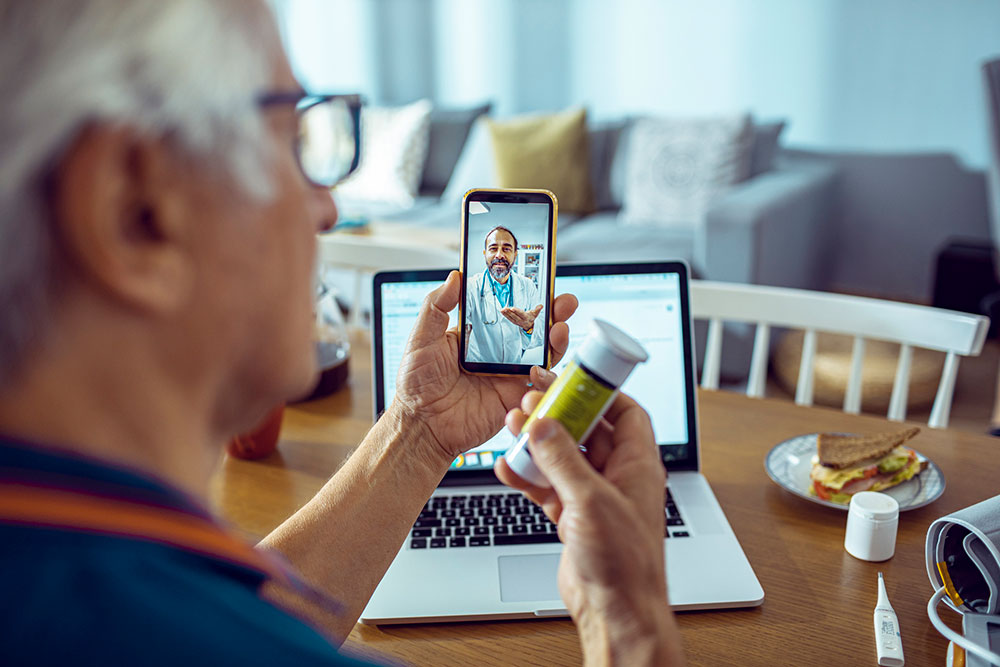
Remaining healthy and independent and continuing to live in their own homes are goals for many older Americans who want to age in place in the homes and communities they’ve come to love and cherish. Achieving that goal is increasingly possible as technology progresses to better serve older Americans’ home health care needs.
An impressive range of new technologies– sensors, voice activation, artificial intelligence, GPS, Bluetooth, cellular connectivity via cell photos, smartphone monitoring apps—are providing the means to age in place more safely and comfortably than ever.
A recent survey by AARP shows just how prevalent that desire to age in place is. Results of the questionnaire in 2021 indicated that 77 percent of adults 50 and older want to remain in their homes for the long term — a number that has remained about the same for more than a decade. The survey also found that many older adults own their homes and would prefer to stay in them and their communities as they grow older. In fact, only 29% say they plan to relocate to another community.
The good news for seniors who want to live independently is that technologies are evolving to better help them retain their independence. Here are a few:
Telemedicine/Telehealth
Telehealth came to the forefront during the pandemic when many people couldn’t leave their homes to visit their doctors. Telehealth or telemedicine are broad terms that refer to a range of services used to deliver healthcare virtually. Patients don’t have to leave their homes to communicate in real-time with their doctors via their computers or cell phones. A telehealth visit can be used to diagnose some illnesses, discuss patients’ concerns or even manage long-term health concerns. Have a bothersome rash? Your doctors can see it over your phone or computer much the same as they would during an in-person visit.
Patients can also self-monitor their health at home and provide that information to their doctor using a computer or mobile device. As an example, a patient might track their daily food intake and send that information to a physician or other healthcare provider who is monitoring their diabetes or heart disease.
In addition, a remote patient monitoring device can be used to collect a patient’s basic health information—weight, blood sugar, or heart rate, for instance–and convey that data to a healthcare provider who is keeping an eye on these health markers.
In fact, a recent study by the National Poll on Healthy Aging at the University of Michigan found that more older Americans ought to be self-monitoring their blood pressure.
Medical Alert Devices/Personal Emergency Response Systems
Remember the old saying, ‘I’ve fallen, and I can’t get up?’” New technologies such as GPS have enabled medical alert devices, such as the one that was advertised in that old commercial, along with other personal emergency response systems, to provide more assistance than ever before.
Systems have various capabilities, including fall detection, notifications that it’s time to take a medication, the ability to connect with agents 24/7 when emergencies occur or get assistance from an on-call nurse.
They can also provide the ability for adult children or other loved ones to connect via their own computers devices to stay updated on a senior’s health and safety. In the case of a person with Alzheimer’s, it means they can see if a person has wandered away from home. They can also see when a parent is active or inactive for a period of time. Such devices that allow for remote monitoring bring peace of mind for family members who can log onto a website to check on their loved ones and receive a text, email or phone call if anything out of the ordinary occurs.
Other capabilities include one-touch video chat, photo/video sharing and messaging. Other tasks that such systems may offer include medical monitoring (glucose, oxygen, blood pressure and weight) and may display other information such as a diet or exercise plans.
Digital Pill Dispenser
It may not look much different from the traditional seven-day version, but a digital dispenser helps seniors remember to take their medications and not to take too much or too little. The devices stay locked until it’s time to take a medication. A caregiver can fill the tray, and the dispenser flashes or beeps when it’s time for a senior to take a pill. A caregiver or loved one can also log onto a website to be sure that a medication has been taken or receive a text of phone call to warn them that a medication has not been taken.
With these new technologies and others, older people can live more safely and comfortably in their homes.